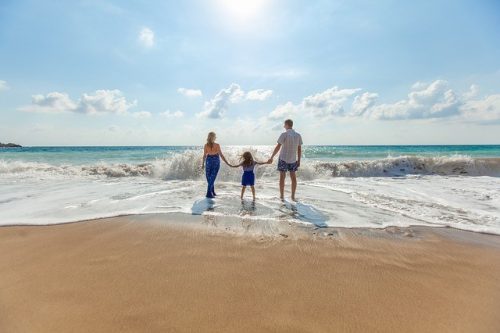We all love the beach, but getting a decent photograph from your beach excursion can be a little tricky. Here are a few quick tips on camera settings to use for your beach photography that should help you improve your results.
Best Settings for Taking Pictures at the Beach
Be Early or Be Late
In general the best photos you will capture at the beach will generally be taken before the light becomes too powerful. That means shooting during the blue and golden hours. Shooting during this time on a beach can get you some stunning photographs and is much easier than shooting when the sun is high in the sky.

Know the Limitations of Auto
If you're shooting in auto mode at the beach in the bright sun, your Nikon camera from Beachcamera.com will probably be predisposed to under-exposing your images. If you're having problems with the auto setting, then switch to manual and experiment with your exposure settings.

Mind Your Exposure Settings
A beach during the day throws up all types of exposure problems. Basically, it's really really bright. You're going to need a low ISO setting, around 100 or 200, in combination with a narrow aperture. Somewhere between f14 and f22 will work with a moderately fast shutter speed. If you want a narrower depth of field, for a portrait for example, then you’ll need to open up the aperture and make the shutter speed a lot faster. Choose your shutter speed depending on what you intend to shoot. If you’re looking to freeze actions like a crashing wave or water splashing, go for a faster shutter speed. If you’re looking to record movements, you will need to go for longer exposures, in other words, slow shutter speed of 1 to 10 seconds or longer depending on what you wish to photograph.
Use the Sunny f/16 Rule as a Yardstick
If you don't know the sunny f/16 rule, it's a good yardstick for shooting in bright conditions. The Sunny 16 Rule is a way to meter for correct exposure during daylight without using the camera’s meter. The basic rule of thumb states that if you have a clear, sunny day and your aperture is at f/16, whatever ISO you are using, your shutter speed will be the reciprocal value of that ISO value. So for example, if your ISO is 200 at f/16, then your shutter speed will be 1/200 seconds. If your ISO is 100, then your shutter speed will be 1/100 seconds. It probably won't work perfectly in beach conditions every time though. A beach at midday is just about brighter than any other landscape so you’ll have to adjust for that, possibly with faster shutter speed or an even narrower aperture. Experiment for the conditions you find yourself shooting in.
Consider Filters
There are three filters that you might want to consider using. An ND filter will allow you to reduce the intensity of light hitting your camera's sensor. A polarizing filter will reduce reflections and help darken the sky. A UV filter can produce lens flare.

If you're shooting people and faces when the background is really bright, then you might need a little fill light to make sure the faces aren't underexposed. Force the flash to fire in this situation.

Be Prepared for the Elements Whether you want to record your world from behind a lens or be the star of the show, DJI Osmo Action Waterproof Action Camera from Beachcamera.com is an adventure-ready camera. You can capture photos or video from your summer adventures all while staying protected from the elements.

These tips will help you take better photographs during your next family vacation or weekend getaway to the beach!






































